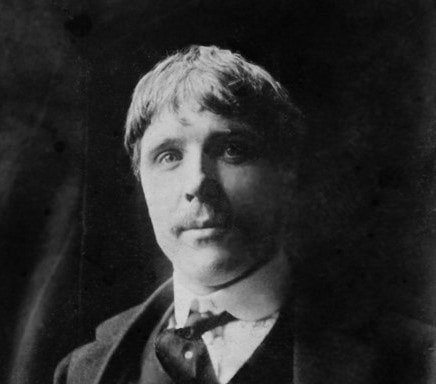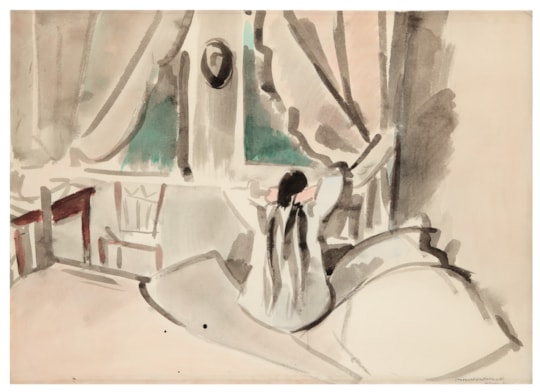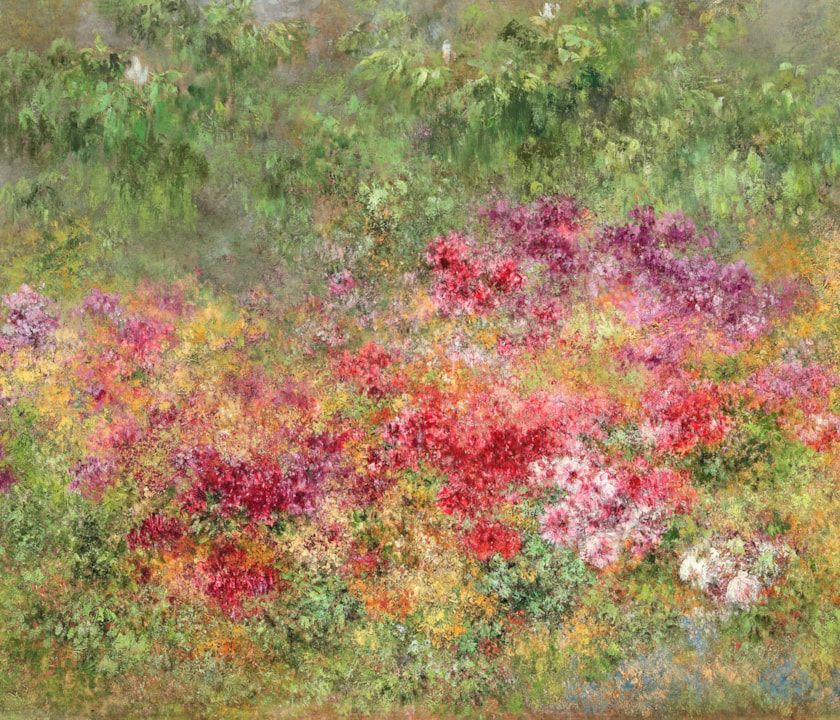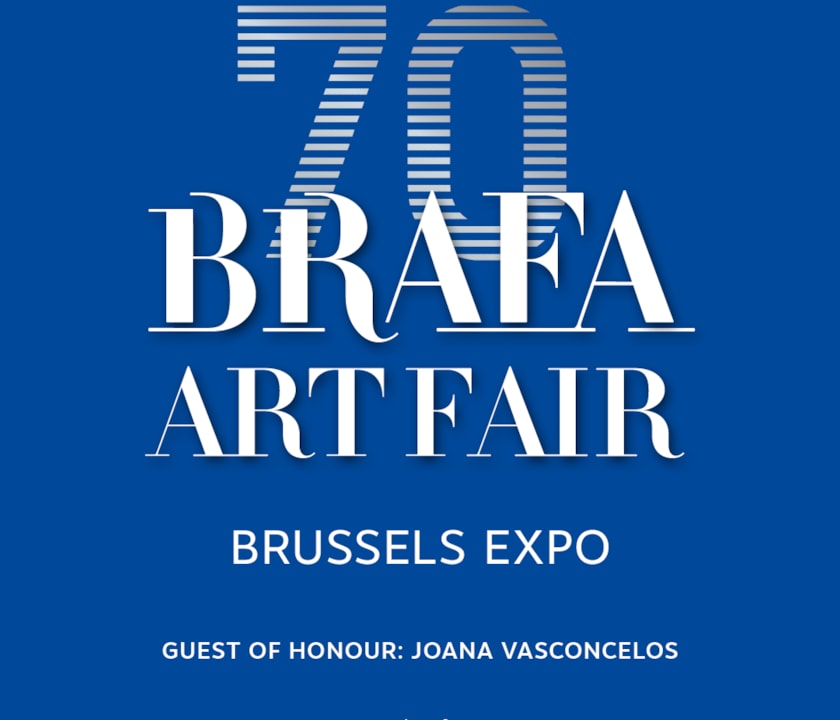Rik Wouters
(1882 - 1916)

Rik Wouters
(1882 - 1916)
ils d’un sculpteur-décorateur de meubles, Rik Wouters commence à travailler en 1894 dans l’atelier de son père, où il s’exerce à la sculpture sur bois. Il suit ensuite les cours de l’Académie de Malines à partir de 1897, puis de l’Académie royale des beaux-arts de Bruxelles à partir de 1900, notamment le cours de « sculpture d'après nature » donné par Charles Van der Stappen.
Il s'y lie d'amitié avec Fernand Verhaegen, inscrit la même année que lui, et avec Edgard Tytgat.
En 1905, il rencontre Nel, la jeune femme modèle pour différents artistes, qui devient sa femme et la muse qu'il ne cessera jamais de représenter. Sans revenus, le couple est bientôt contraint d’aller vivre chez le père de Rik, à Malines. À la suite de tensions avec ce dernier, ils reviennent à Bruxelles, d’abord dans un logement misérable de Saint-Josse-ten-Noode, ensuite à Watermael-Boitsfort, où pour soigner la tuberculose de Nel, ils s’installent en 1907, rue de la Sapinière, en bordure de la forêt de Soignes, qui deviendra le sujet de bon nombre de toiles de Wouters.
Il obtient un prix au concours Godecharle avec sa sculpture Rêverie.
Au début de sa carrière, Rik Wouters, fasciné par l’œuvre de James Ensor, peint au couteau des natures mortes et des intérieurs avec figures où règne la même lumière que dans les tableaux du maître. Il dessine énormément à l’aquarelle, au fusain, des études de nus, des portraits, fait plusieurs essais de peinture et des études de lumière en utilisant des couleurs claires appliquées sur du carton, les toiles étant trop chères.
Isolé, il cherche sa propre voie. Il réalise un buste en plâtre de son ami Edgard Tytgat qui ne sera coulé en bronze que bien plus tard.
Dès 1908, sa réputation de sculpteur est établie, il est invité à participer à plusieurs salons et reçoit une subvention officielle de 500 Francs belges. En 1910, il sculpte La Vierge Folle, qui est inspirée par la danseuse Isadora Duncan.
En peinture, il découvre en 1911 l’œuvre de Paul Cézanne au travers de reproductions en noir et blanc. Il change de technique abandonnant le couteau pour la brosse. Ce n’est que l’année suivante qu’il peut se rendre à Paris et y découvrir enfin l’œuvre des impressionnistes. Il admire beaucoup les toiles de Cézanne et de Vincent van Gogh, ses couleurs se font plus chatoyantes. Son œuvre sera qualifiée de « fauvisme brabançon », lorsque cette appellation sera inventée par Fierens en novembre 1941.
Il signe un contrat avec la galerie Georges Giroux qui lui fournit une rente mensuelle en échange de la moitié du produit de la vente de ses œuvres, ce qui lui procure enfin une certaine sécurité matérielle. Rik Wouters entre alors dans une période de très grande production, peignant une soixantaine de toiles en 1912, année où il expose avec Ramah (Henri Ramaeker), Ferdinand Schirren et Pierre Bonnard, membre du groupe des nabis). L’exposition qui se tient à la galerie en 1914 lui apporte la consécration.
Cette même année, la Première Guerre mondiale éclate. Il peint avec Alexandre Struys, autre peintre malinois, les premières scènes de la guerre. Mais, mobilisé, il se retrouve interné dans un camp aux Pays-Bas. Il souffre alors des premiers symptômes du cancer qui l’emportera et est hospitalisé. Il s’installe à Amsterdam en 1915 avec Nel venue le rejoindre et continue à peindre malgré la douleur. Il perd un œil à la suite d’une opération. Il réalise encore une exposition en février 1916 et meurt quelques mois plus tard, le 11 juillet 1916.
Une grande partie de son œuvre peint s'articule autour de la représentation de sa femme dans ses multiples activités ménagères.
On connaît aussi les autoportraits de Rik Wouters. On est moins au courant de ceux peints par ses amis artistes. Ainsi le musée des beaux-arts de Bruxelles possède une toile de Fernand Verhaegen, datée de 1910 et portant le titre Rik Wouters et son modèle. Il existe plusieurs autres tableaux peints par Fernand Verhaegen et représentant Wouters, son épouse et leur chienne Stella. Edgard Tytgat avait, lui, croqué ses deux amis Wouters et Fernand, accompagnés de leurs épouses, dans un dessin à l'encre de Chine datant de 1907 et intitulé La Ligue des peintres wallons, Doe stil voort.
Il s'y lie d'amitié avec Fernand Verhaegen, inscrit la même année que lui, et avec Edgard Tytgat.
En 1905, il rencontre Nel, la jeune femme modèle pour différents artistes, qui devient sa femme et la muse qu'il ne cessera jamais de représenter. Sans revenus, le couple est bientôt contraint d’aller vivre chez le père de Rik, à Malines. À la suite de tensions avec ce dernier, ils reviennent à Bruxelles, d’abord dans un logement misérable de Saint-Josse-ten-Noode, ensuite à Watermael-Boitsfort, où pour soigner la tuberculose de Nel, ils s’installent en 1907, rue de la Sapinière, en bordure de la forêt de Soignes, qui deviendra le sujet de bon nombre de toiles de Wouters.
Il obtient un prix au concours Godecharle avec sa sculpture Rêverie.
Au début de sa carrière, Rik Wouters, fasciné par l’œuvre de James Ensor, peint au couteau des natures mortes et des intérieurs avec figures où règne la même lumière que dans les tableaux du maître. Il dessine énormément à l’aquarelle, au fusain, des études de nus, des portraits, fait plusieurs essais de peinture et des études de lumière en utilisant des couleurs claires appliquées sur du carton, les toiles étant trop chères.
Isolé, il cherche sa propre voie. Il réalise un buste en plâtre de son ami Edgard Tytgat qui ne sera coulé en bronze que bien plus tard.
Dès 1908, sa réputation de sculpteur est établie, il est invité à participer à plusieurs salons et reçoit une subvention officielle de 500 Francs belges. En 1910, il sculpte La Vierge Folle, qui est inspirée par la danseuse Isadora Duncan.
En peinture, il découvre en 1911 l’œuvre de Paul Cézanne au travers de reproductions en noir et blanc. Il change de technique abandonnant le couteau pour la brosse. Ce n’est que l’année suivante qu’il peut se rendre à Paris et y découvrir enfin l’œuvre des impressionnistes. Il admire beaucoup les toiles de Cézanne et de Vincent van Gogh, ses couleurs se font plus chatoyantes. Son œuvre sera qualifiée de « fauvisme brabançon », lorsque cette appellation sera inventée par Fierens en novembre 1941.
Il signe un contrat avec la galerie Georges Giroux qui lui fournit une rente mensuelle en échange de la moitié du produit de la vente de ses œuvres, ce qui lui procure enfin une certaine sécurité matérielle. Rik Wouters entre alors dans une période de très grande production, peignant une soixantaine de toiles en 1912, année où il expose avec Ramah (Henri Ramaeker), Ferdinand Schirren et Pierre Bonnard, membre du groupe des nabis). L’exposition qui se tient à la galerie en 1914 lui apporte la consécration.
Cette même année, la Première Guerre mondiale éclate. Il peint avec Alexandre Struys, autre peintre malinois, les premières scènes de la guerre. Mais, mobilisé, il se retrouve interné dans un camp aux Pays-Bas. Il souffre alors des premiers symptômes du cancer qui l’emportera et est hospitalisé. Il s’installe à Amsterdam en 1915 avec Nel venue le rejoindre et continue à peindre malgré la douleur. Il perd un œil à la suite d’une opération. Il réalise encore une exposition en février 1916 et meurt quelques mois plus tard, le 11 juillet 1916.
Une grande partie de son œuvre peint s'articule autour de la représentation de sa femme dans ses multiples activités ménagères.
On connaît aussi les autoportraits de Rik Wouters. On est moins au courant de ceux peints par ses amis artistes. Ainsi le musée des beaux-arts de Bruxelles possède une toile de Fernand Verhaegen, datée de 1910 et portant le titre Rik Wouters et son modèle. Il existe plusieurs autres tableaux peints par Fernand Verhaegen et représentant Wouters, son épouse et leur chienne Stella. Edgard Tytgat avait, lui, croqué ses deux amis Wouters et Fernand, accompagnés de leurs épouses, dans un dessin à l'encre de Chine datant de 1907 et intitulé La Ligue des peintres wallons, Doe stil voort.




